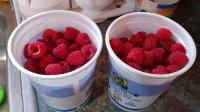Amazoniac
Member
A Nishihara-disapproved recipe that can boost travisterol levels in a matter of minutes.
- freeze cubes of pine and apples
- let it thaw for a while so that there's no need to add liquids (orange of the juices, etc)
- blend with a food processor (small and straight container works best)
- bicarbonate salts can be added to regulate acidity (it's like eating a tasty sponge)
I know it's difficult to prepare but it's worth it.
- freeze cubes of pine and apples
- let it thaw for a while so that there's no need to add liquids (orange of the juices, etc)
- blend with a food processor (small and straight container works best)
- bicarbonate salts can be added to regulate acidity (it's like eating a tasty sponge)
I know it's difficult to prepare but it's worth it.


